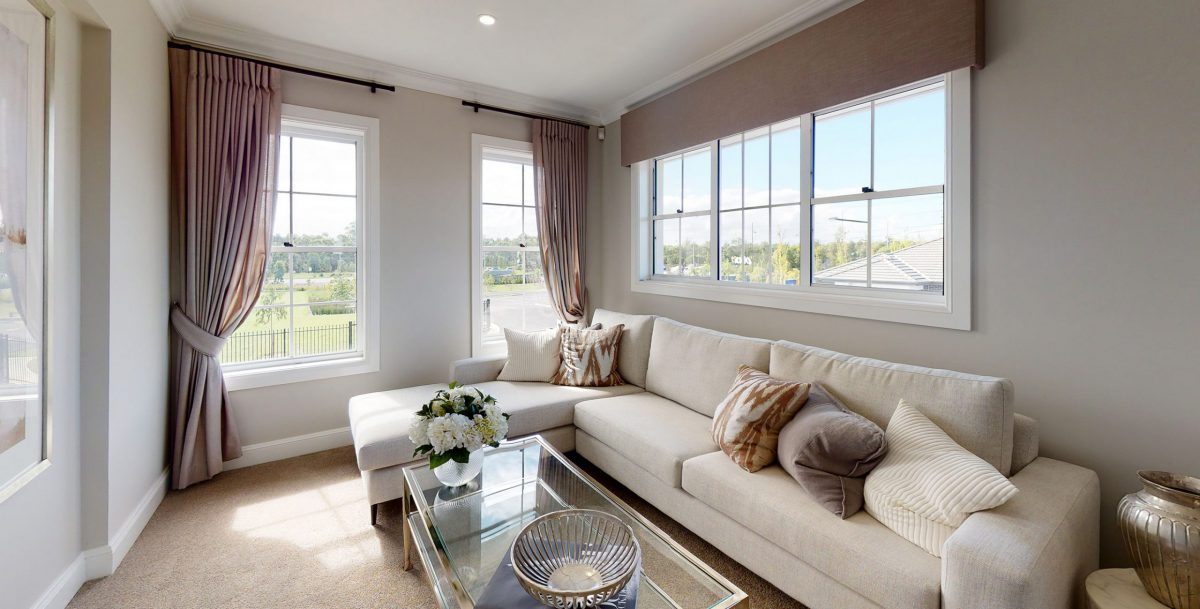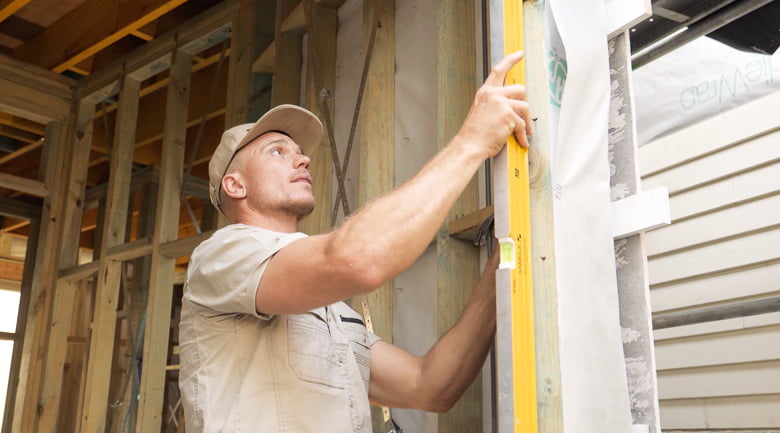
Window condensation occurs when the warm air inside your home meets the cold glass of your windows. It’s a common problem, and one that has become more prevalent as modern building methods produce increasingly airtight homes. In older construction, where heat could escape to the outside and homes were not sealed as well, it was harder for condensation to form.
While there are benefits to an energy efficient home, one of the unwanted side effects is that it provides the perfect conditions for condensation to form. Learn the causes and cures to manage condensation in your home.
What is the water on my windows from?
Water or frost on windows is condensation. Condensation is formed when warm moist air comes in contact with cooler dry air. An example of this is when a bathroom mirror “steams up” after a hot shower. Just like that mirror, the inside or outside of your window can sweat or fog because of temperature differentials.
Is condensation bad?
A little moisture on your windows means that your windows are keeping you insulated from the outside elements, but if your windows are consistently too wet, this moisture could result in mould growth. Mould is an unwanted intruder in your home, where prevention is much easier than fixing an existing problem.
Are my windows to blame?
Condensation is not caused by faulty windows. Glass is usually the first place you notice condensation because glass surfaces have the lowest temperature of any surface in a building.
Then what’s the cause?
The short answer; Mother Nature.
Moisture in the air causes condensation. The reason you may observe more condensation in your home is because of modern energy-efficient home building methods and products. The insulation and construction materials used today are cleverly designed to keep cold air outside. This is especially true of new windows.
Just as energy-efficient designs and weather-stripping keep cold air outside, they also keep warm moist air inside. Older window designs were less efficient and consequently allowed moisture to escape. So if you didn’t have as much condensation before replacing your old windows, it’s probably because they were drafty.
Good windows and insulation all create barriers to the air exchange of a home. When combined with the additional water vapor (moisture) from showers, cooking, or from clothes dryers not vented to the outside, the result is excess moisture and a high relative indoor humidity level.

Horizon double hung window with colonial bars in Pearl White
How do I reduce condensation?
To reduce condensation you need to control the humidity inside your home.
During the warm humid summer your house absorbs moisture. Then as winter approaches you begin to heat your home. This is when condensation occurs. After a few weeks your home will begin to ‘dry out’ and you’ll see less condensation.
You can reduce the amount of condensation on windows by:
- Increasing ventilation
-
Opening windows
- Replacing windows.
Ventilation
Is the key to limiting the amount of moisture that builds up in your home. Bathrooms and kitchens should have exhaust fans installed to reduce the level of humidity inside. It is also a good idea to install an exhaust fan in your laundry. The use of clothes dryers in winter can often lead to condensation on windows. Put simply, the less humidity in your home, the less condensation will form on your windows.
Opening windows or doors
Is the easy way to increase ventilation in your home, and produces several benefits including reducing the condensation on your windows. If your home does not have enough openable windows, you might consider installing new windows that allow good cross ventilation.
Opening drapes or curtains
Allows air to circulate against windows. Turning off any humidifying devices in your home, or installing and using a dehumidifier.
If you live in a northern climate, the above tips as well as the following points, may be relevant:
- Add storm windows or replace existing single-pane windows with insulated windows.
- Keeping plants in a sun room or in rooms that are infrequently used during extreme cold weather.
- Adding water proofing protection to basement floors and walls.
- Removing radiator pans until sweating has been eliminated.
When should I be concerned?
Window condensation should only occur when there are extreme temperature differences between indoor and outdoor spaces. In addition, there should only be a fairly small amount of water on the glass.
Condensation will be seen on the inside of a window during winter months, and will present itself on the outside of a window during summer months. If you find condensation between the two layers of glass in an insulated window, the airtight seal has probably been broken and the glass will need to be replaced.
If there is too much moisture inside the home, you will see evidence during both the cold and warm seasons.
Moisture spots on the ceiling or walls, peeling paint, rotting wood, delaminating plywood, moisture on exterior walls, and fungus, mould or mildew growth are signs of a more serious moisture problem.
Should you experience these symptoms, an expert heating and cooling contractor should be contacted in order to solve the problem.
Upgrading your windows
If condensation is a recurring problem in your home, it might be time to replace your windows. Replacing poorly performing windows with energy efficient glass and openable windows, can reduce your condensation problems. Take a closer look at openable windows that will improve airflow through your home:
- Double hung windows open both the top and bottom sash, so circulate air effectively.
- Casement windows open to the side and can be used to capture the breeze.
- Awning windows can be cranked open a small amount and left open during the day and night, even in inclement weather.
- Louvre windows adjustable blades allow you to control the amount of air you want to let into your home.
Visit your nearest Wideline showroom to see our range of windows and doors on display.
It’s easy to get a quote online or call 1300 943 354 for more information.


